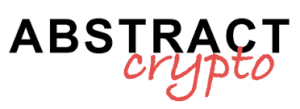For PayPal on the stock market, the last few years have been particularly difficult.
However, now it is finally starting to take a breather, recording the highs of 2024.
The performance of PayPal on the Stock Exchange
PayPal landed on the stock exchange in 2015.
Until the 2020 pandemic, the price of its shares had consistently increased, although not by much, rising in five years from less than $40 to more than $120.
The turning point occurred precisely with the onset of the pandemic, and especially the lockdowns that led to a sudden boom in online purchases.
PayPal deals specifically with online payments, and so that boom made the stock take off on the bull market.
In a year and a half, from February 2020 to July 2021, the price of its shares went from $120 to $310, marking the historical highs.
Practically in just a year and a half, it managed to triple its value, more or less as it had done in the previous five years.
The problem for PayPal is that then the pandemic ended, and the lockdowns as well.
The return to normality of PayPal (PYPL) shares
Unfortunately, however, this return to normality did not mean a return to pre-pandemic stock market values.
In fact, in 2020/2021 a true speculative bubble had inflated on the stock PYPL in the stock market, and so starting from September 2021 this bubble burst.
The burst lasted throughout the bear-market of 2022, and ended up continuing last year, down to a post-bubble low of $50.
Note that $50 is less than half of the $120 it had reached in February 2020 before the start of the pandemic, and it is just a little more than the initial $38 of 2015.
The first time the PayPal stock reached $50 on the stock market was actually in May 2017.
At this point, it was imaginable that the bottom of 2023 had been excessive, meaning that an excess of euphoria in 2020/2021 was followed by an excess of fear in 2022/2023.
The 2024
And so, 2024 is marking a clear recovery.
The post-bubble low was reached in October 2023, precisely when the crypto bullrun started at the end of last year.
The bullrun crypto continued until March of this year, while the rebound of PayPal on the stock market ended already in January above $60. It was therefore a minimal rebound, also because $60 was still half of the pre-pandemic peak.
Until July, the price then fluctuated between $60 and $70, with small and very brief excursions above and below these thresholds, but since August it has awakened.
It’s as if the rebound from the lows of the last bear-market occurred in two phases, seven months apart from each other.
In August, it managed to establish itself consistently above $70, while in September, it then managed to climb back above $80.
After reaching $83 at the end of October, at the beginning of November the price of PayPal shares fell to $76, but with the US presidential elections, it started a growth that in one week allowed it to recover $12.
Yesterday at the opening it also approached 88$, but then repositioned itself just above 86$.
Although the current price is still significantly lower than that of February 2020, at least it is in line with that of October 2018, and if the trend of PayPal on the stock exchange were linked to that of the crypto market, it could have the possibility in 2025 to return at least to the pre-pandemic maximum levels.
The forecasts
According to some analysts, the trendline of the Paypal stock on the market would be bullish, and it would also be more pronounced compared to the performance of the Nasdaq 100.
On the other hand, a stock linked to a company that is in good standing, and that has fallen significantly during the bear-market, is currently decidedly attractive for the market.
The company bills almost 30 billion dollars, against a market capitalization of 86 billion, and closed 2023 with a gross operating profit of 5 billion.
Additionally, it manages assets worth more than 80 billion dollars.
For these reasons, analysts see the possibility that it could break through the 88$ wall in the stock market, and that it might even end up continuing above 90$ in the medium/short term.
Obviously, there are also those who are not so optimistic, also because compared to five years ago the company has many more competitors, and much more aggressive.
Furthermore, its crypto services never really took off, also because they are not comprehensive crypto services, but the addition of services dedicated to criptovalute on a traditional financial platform.


